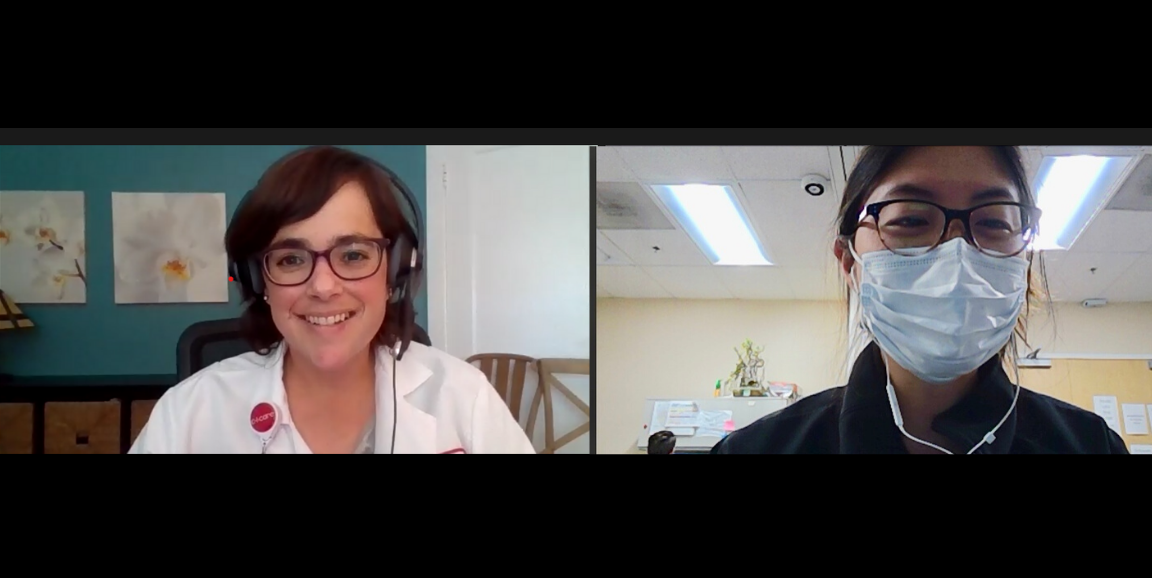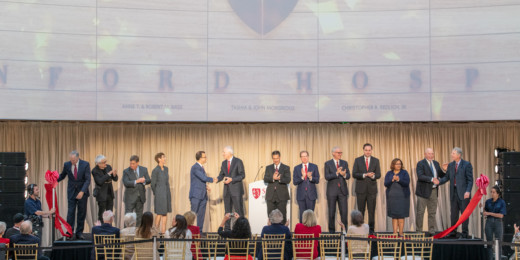As an intern last year, I struggled to explain a life-threatening aneurysm to a patient whose first language wasn't English. I ended up summarizing the diagnosis as an "abnormal bubble on a blood vessel at the back of the brain." An interpreter by my side deftly translated the phrasing into Spanish, and the patient nodded appreciatively in understanding.
I, too, thought about how much I appreciate medical interpreters.
Patient care involves an incredible amount of information exchange. Clear and effective communication is critical for everything from making plans with our attending physicians during morning rounds to updating patients and families about their surgeries and imaging results.
Integral to our team -- and to the hospital as a whole -- are Stanford Medicine's approximately 60 medical interpreters. Through video conferencing, phone calls or in-person sessions, these interpreters cover an impressive array of languages, including Spanish, Mandarin Chinese, Farsi, and American Sign Language, among others. This is particularly important here in the San Francisco Bay Area, where more than 100 languages are spoken.
80,000 interactions involving interpreters
Doctors and nurses work frequently and closely with these medical interpreters. In 2019, the total number of interactions involving interpreters at Stanford's adult hospital was close to 80,000, according to Johanna Parker, a medical Spanish interpreter and lead interpreter for education and training at Stanford.
I usually call interpreter services at least once a week for help with patient consent, family meetings and updating patients and families. I had assumed the toughest part of an interpreter's job would be to communicate in a different language our field's esoteric procedures (corpectomy, navigated tumor resection, clipping) and diagnoses (osteomyelitis, glioblastoma, aneurysm) -- not to mention the innumerable and obscure acronyms and abbreviations.
However, I learned more about the subtleties when I spoke with Parker.
She told me that her goal as an interpreter is to facilitate communication and to preserve the autonomy of both patients and providers. This means she must be sensitive to what a patient may or may not understand -- and if she feels that medical terminology may be confusing for a patient, she works with the physician or nurse to determine accurate, simplified wording.
"We act as message clarifiers," she told me, "and in this role, we alert the provider to the fact that there could be a linguistic or cultural misunderstanding, allowing the provider to explain."
Conveying stated and implicit meanings
Parker also told me about nuances of interpretation that go beyond words.
In addition to breaking down technical medical terms, interpreters convey doctors' and nurses' stated and implicit meanings to patients and families, making sure that nothing gets lost in translation. They also serve as a bridge, ensuring that health care providers understand the questions, concerns and desires of patients and their loved ones.
Communicating the emotional aspects of medical care for a patient and their doctor is important, she told me, but handling discussion flow can get tricky -- especially with multiple people in one conversation.
In my work, I've found that the presence of a medical interpreter allows more opportunity for family to devote to and support the patient, because they have confidence that they're communicating clearly with health care providers.
For Parker, medical interpretation goes even deeper. She told me that it was "an honor to be someone's voice" and "deeply fulfilling...to help [people] be less afraid by understanding what was happening."
Adela Wu, MD, is a neurosurgery resident at Stanford with a longstanding interest in art, writing and literature.
Johanna Parker, lead interpreter for education and training at Stanford Health Care, converses via video with neurosurgery resident Adela Wu. Photo courtesy of Adela Wu




